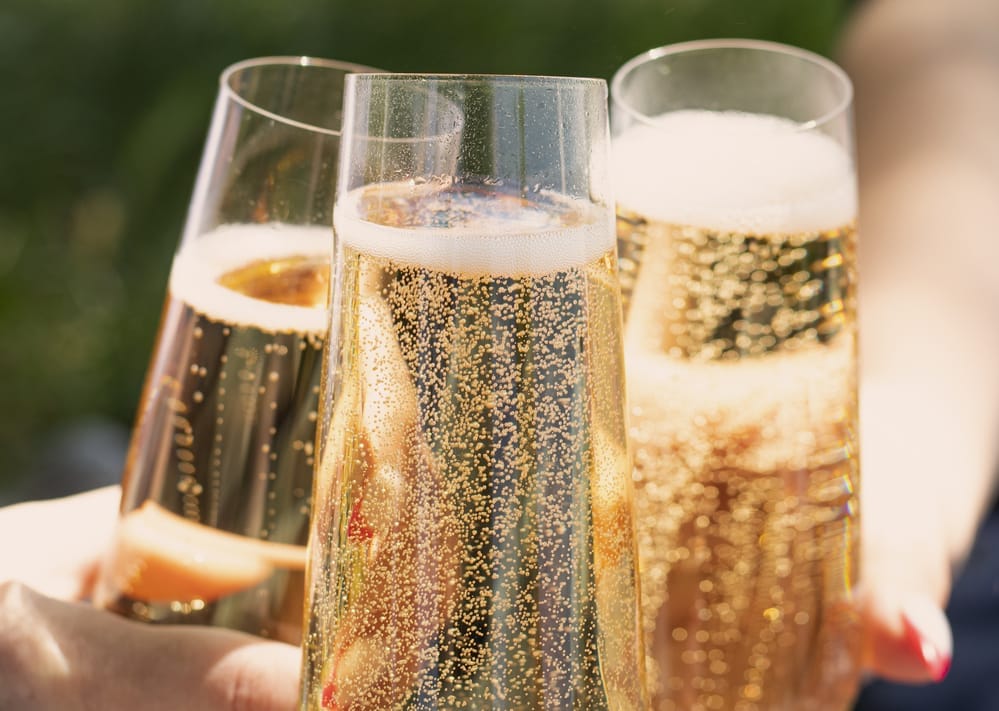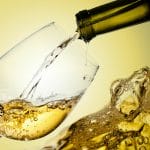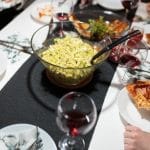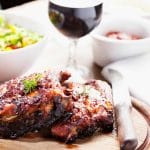Sparkling wines are a sweet treat that can be enjoyed over the dinner table, when out with friends, and in the odd morning mimosa.
However, if you are health conscious (and conscious of your energy intake), finding out about the calories in wine likely won’t feel so sweet!
Sparkling wines with low calories are blooming in popularity amongst health-conscious wine lovers.
This article will delve into guiltless bubbly wine options that will keep your well-being sparkling as well.
I’ll delve into:
- Overview of popular low-calorie sparkling wines
- Top 10 low-calorie sparkling wines including Rosés, Proseccos, and Brut
- Understanding the calories in wine
- Sugar and alcohol
- Final words and FAQs.
Let’s get into it!

Popular Low-Calorie Sparkling Wines
Wine lovers who are conscious of their energy intake have plenty of choices to select from. Compare the calories below to the heavier wines at ~160/ glass. I’d recommend giving any of the following a try:
- Conscious Sparkling (Vegan low-calorie wine) – 68 cal/glass
- Mas Macia (Cava Brut Nature Reserva) – 83 cal/glass
- SlimLine Wine (Sparkling Rose) – 76 cal/glass
- Perelada, Stars (Cava Brut Nature Reserva) – 79 cal/glass
- Skinny Witch Prosecco Rose – 84 cal/glass
- La Gioiosa Prosecco – 79 cal/glass
Top 10 Low-Calorie Sparkling Wines for 2023

I have selected 10 low-calorie sparkling wines for 2023 based on calorie count, taste notes, and style.
This should provide you with several viable options depending on your preferences, as well as the confidence to choose your next wine wisely!
Mionetto Prosecco Treviso Brut
There are 67 cal/100ml in this option, and about 84cal if you pour a medium/small glass.
ABV in this classic style prosecco is 11%. As far as style goes, the Mionetto prosecco is aromatic and more dry than sweet.
The taste notes are light and earthy, including notes like black licorice, honey, and yellow orchard apples. Food-match this wine with seafood dishes, vegetables, miso, and mushrooms.
Pasqua Romeo Brut Rose
There are about 97 calories per medium glass of prosecco rosés – a good improvement on the ~150 or ~155 calories per glass in regular rosé.
ABV is 11% for the Pasqua Romeo Rosé. This is a sweet rose that balances its intensity out with bubbles and the aromas of red fruits like raspberries. Match it with crusty bread and creamy cheese!
Pascal Jolivet Brut Rosé
The calorie count of Pascal Jolivet Brut Rosé is 110 cal per glass – a slightly richer option but still economical.
ABV is 12.5%, and the wine is made in a French Loire style which is crisp, mineral, and dry.
The prominent flavors of this rosé are crunchy red apples and bold citrus, and it balances well with light meals such as salads and seared white fish.
Domaine Ste. Michelle Brut Rosé
This wine comes in at a light 98 calories per glass!
With an 11% ABV, the Domaine Ste Michelle Rose is light yet lively. Its style is dry but not bitter, and still retains the sweetness of the grapes in Columbia Valley.
If you try this wine, you will notice the strawberry and citrus aromas. To make it a meal, pair this sparkling rose with the heat of chilies and a Thai coconut dish!
Ruffino Prosecco Brut
This wine has 120 calories per average glass and 0g net carbs.
The ABV is 11%, and it is made in an Italian prosecco style that is medium-heavy – both sweet and crisp.
The flavor profile falls on the fragrant and floral side for this Prosecco. There are wisteria and elder aromas, and the spring taste of pear blossoms.
Ruffino Prosecco Brut pairs well with a simple margarita pizza, or with white meat dishes like coq au vin blanc.
Mumm Napa Brut – Award-winning
This is another low carb, low-calorie wine at 85 cal/100 ml glass.
The style of Mumm Napa Brut is rich, dry, and refreshingly acidic! Its ABV sits at a decent 12.5%.
This wine is twice fermented to make for a fine sparkling quality with a more complex flavor. This includes yeastiness, ginger, and oak to complement its bright stone fruit. You can pair it well with salty nibbles and light crunchy salads.
Chandon Non Vintage Brut
Chandon Non-Vintage Brut has a very low 70 calories per 100 ml and about 80 calories per small-medium glass.
It has an ABV of 12.5% and is crafted in an aperitif style. This means that its blend of sweet, sharp, and umami stimulates the palate before the main dish is served.
White nectarines and nutty aromas make this a lovely wine to enjoy in an evening of summer snacks before the main meal!
Gloria Ferrer Brut Rosé
The calorie count per medium serving comes to about 80 cal.
ABV for The Gloria Ferrer Brut Rose is 12.5%. Pinot noir and chardonnay grapes combine into a silky, refreshing dry wine.
This is an attractive Rosé with a bright pink color and matches well with fruity desserts like tarts or red summer berries.
La Marca Prosecco
La Marca Prosecco will cost 69 cal per 100ml and about 90 cal per medium glass. The ABV for this wine comes in at 11%, and the style is in the Italian classic dry prosecco.
There are numerous fruity flavors that contribute to the La Marca appeal such as dry crisp apples, white patches, and honey. Pair it with soft cheeses, lychees, and Brazil nuts for a perfect match!
Domaine Chandon NV Brut – Award Winning
In a healthy 150 ml glass, your pour of Domaine Chandon gives about 87 calories.
The ABV is on the higher end for sparkling wines at 12.5%. It gives a dry champagne-like experience because the bubbles are so delicate, and comes with a soft finish.
With grapes from California vineyards, you will enjoy tart citrus and pear flavors. Pair this wine with a light creamy dessert like panna cotta!
Understanding Calories in Wine

Wine has more calories than a lot of us might expect, and these can add up if you are a fellow connoisseur.
The calories in wine come from its energy-dense macronutrients: sugar from the ripe grapes, and alcohol from the fermentation process.
The Role of Sugar and Alcohol in Calorie Count
Ethanol (alcohol) and sugar are two energy-dense macromolecules that carry calories.
If you aren’t conscious about which wine to take off the shelf, your evening glass could end up costing you more calories than the actual meal!
Sugar is broken down easily by the body to supply energy; there are 387 calories per 100 grams of sugar.
High-sugar wines therefore have higher calories, while dry sparkling wines are a delightful lower-sugar option.
Ethanol can be ingested by the body as if it were similar to fat. It provides energy – about 29 Kilojoules per 100 grams – and this energy is stored rather than burned.
Overall, drinking in moderation and considering dry sparkling wines as a lighter alternative will help you stay health-conscious while still being able to enjoy wine!
Making an Informed Choice
Let’s dive into some quick ways to make smart choices when buying wine! I’ll teach you some steps in reading wine labels to find the lower calorie options:
- Check if the label indicates the amount of sugar. ‘Brut’ is a good choice because it indicates dryness. Similarly, there will be more sugar in wines with ‘amabile’ and ‘dolce’ in the label.
The more residual sugar left from the grapes, the higher in calories the wine will be.
If you see ‘Brut Nature’, this means the wine is produced dry and that there is no additional sugar added besides the sugar from the grapes. These bottles will be a great choice for minimizing sugar!
- Some of us prefer low-alcohol options, and some of us would rather have a fuller body with 12.5% wine. Either is fine! In general, however, low-alcohol wines are also lower in calories
- Nutrition information is not normally provided on wine labels as this is not a legal requirement.
Here’s a tip: sparkling wines that have been made intentionally with fewer calories will often brag about it on the label1
Pairing and Serving Low-Calorie Sparkling Wines
Light seafood (e.g., oysters, shrimp)
Light seafood allows sparkling wine flavors to shine, whereas richer meals would distract from the wines.
Equally, richer wines would distract from the delicious seafood! If you are out on a date and want to save room for dessert, try ordering the seafood and asking the server for one of their lighter wine options.
Fresh fruit (e.g., strawberries, melon)
The fruity flavors of sparkling wine shine when paired with a bowl of your favorite/ seasonal fruits.
In the summertime, you can chop up some fruit for your family or a small group of friends. Fruit salad and sparkling wine is a girl’s night classic!
Light salads (e.g., mixed greens, vinaigrette)
A light salad with an acidic vinaigrette cuts through the sweetness of the wine – making it a nice pairing with some of the sweeter wines mentioned in my top 10.
Try serving a leafy salad as a first course before the meat, and pouring a sweeter wine alongside it.
Grilled chicken or turkey
White wines and white meats just work – especially if there is a gravy sauce!
The acidic wine balances out the fat in the sauce. This could be nice in a restaurant or at Christmas time when the sauces tend to be richer. A light wine option makes the flavors and calories more balanced!
Sushi or sashimi
Fresh sushi has subtle umami flavors. White wine in the aperitif style wakes up the palate with sweetness and acidity so that you can appreciate these flavors even more.
Try having sparkling wine before sushi or sashimi to appreciate the sushi flavors more.
Vegetable platters
If you are entertaining, serving some chopped vegetables before the meal helps keep guests busy and won’t fill anyone up too much!
Low-fat cheese or lean protein appetizers
Sparkling wine is a beautiful bubbly aperitif. If you pair it with low-fat and lean appetizers, you can feel extra proud about serving a balanced course.
Also Read: Is Riesling Sparkling or Still Wine?
Final Words
With sparkling wines, you don’t have to throw off the balance to keep on loving wine! It shouldn’t be a struggle to enjoy your preferences and also meet your health goals.
This article has shown that with low-calorie sparkling wines, there’s really no compromise on flavor, variety, and complexity.
Remember that everyone’s goals are different, so you can choose to enjoy sparkling wines and stay health-focused in a way that suits you! Happy sipping.
FAQs
All wines have calories; however, sparkling wines often contain less residual sugar depending on the fermentation method. The bubbles make dry, light wines more satisfying for less calories.
Absolutely! It is a misconception that lower-calorie options compromise on flavor. Of course, you still need to choose a quality producer and explore styles and varieties to find one that suits your personal preference.
Specific brands that produce low-calorie sparkling wines include D.O. Cava, Cuvee, and Skinny Witch. Many fine wine makers offer low-calorie bottles! Look out for the term ‘brut nature’, which indicates no added sugar.
- Moscato vs Roscato: A Comprehensive Comparison of Sweet Wines - December 15, 2023
- Should White Wine Be Chilled? Expert Insights on Serving Temperature - December 14, 2023
- Moscato vs Riesling: A Sweet Wine Showdown - December 8, 2023










